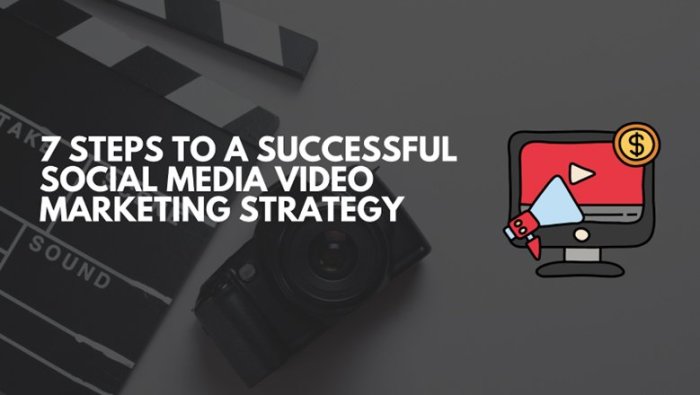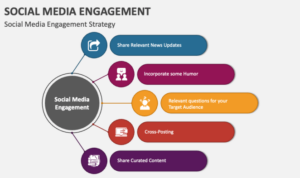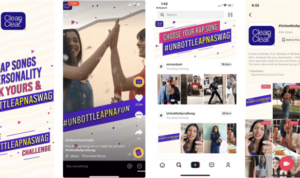Video Marketing Strategies set the stage for a dynamic approach to digital promotion, emphasizing the power of visual content in capturing audience attention and driving brand success. From defining key concepts to exploring effective tactics, this guide dives deep into the realm of video marketing.
Introduction to Video Marketing Strategies
Video marketing strategies are essential components of digital marketing campaigns. In today’s fast-paced digital world, where attention spans are shorter than ever, incorporating video into marketing efforts is crucial for capturing audience engagement and driving brand awareness. Successful brands have leveraged video marketing effectively to connect with their target audience, increase brand visibility, and drive conversions.
Examples of Successful Brands Using Video Marketing
- Red Bull: Red Bull has mastered the art of video marketing by creating engaging and adrenaline-pumping content related to extreme sports and events. Their videos not only showcase their brand ethos but also resonate with their target audience, leading to increased brand loyalty and engagement.
- Dollar Shave Club: Dollar Shave Club disrupted the industry with their quirky and humorous video marketing campaigns. Their viral video “Our Blades Are F*ing Great” not only went viral but also effectively communicated their value proposition to potential customers, leading to a surge in sales and brand awareness.
- Nike: Nike’s video marketing campaigns are known for their inspirational storytelling and emotional appeal. By showcasing real stories of athletes overcoming obstacles and achieving greatness, Nike connects with their audience on a deeper level, building a strong emotional bond and brand loyalty.
Types of Video Content for Marketing

When it comes to video content for marketing, there are various types that businesses can leverage to engage with their audience and promote their products or services. Each type of video content serves a different purpose and can be effective in different ways.
Tutorials
Tutorials are instructional videos that provide step-by-step guidance on how to use a product or service. They are highly effective in educating customers and showcasing the features and benefits of a product. Tutorials can help build trust and credibility with the audience, as they demonstrate the expertise of the brand.
Testimonials
Testimonial videos feature satisfied customers sharing their positive experiences with a product or service. These videos are powerful in building social proof and credibility, as they show real people benefiting from the brand. Testimonials can help increase trust and encourage potential customers to make a purchase.
Product Demos
Product demo videos demonstrate how a product works in action, highlighting its key features and functionalities. These videos are effective in showcasing the value proposition of a product and helping customers visualize how it can solve their problems. Product demos can be engaging and persuasive, driving conversions and sales.
Impact of Storytelling
Storytelling plays a crucial role in video content creation, as it helps create an emotional connection with the audience. By weaving a narrative around a product or brand, storytelling can evoke feelings, resonate with viewers, and leave a lasting impression. Storytelling in video content can make the brand more relatable and memorable, leading to increased engagement and loyalty.
Creating Engaging Video Content
To create engaging video content, it is essential to focus on visual aesthetics, storytelling, and evoking emotions in your audience. These elements play a crucial role in capturing viewers’ attention and keeping them engaged throughout the video.
Visual Aesthetics
Visual aesthetics refer to the overall look and feel of your video, including the colors, lighting, and composition. Make sure to use high-quality visuals, choose a suitable color palette, and pay attention to details like framing and camera angles to create a visually appealing video.
Storytelling, Video Marketing Strategies
Storytelling is a powerful tool in video creation. Develop a compelling narrative that captivates your audience from the beginning to the end. Use storytelling techniques such as a clear plot, character development, and conflict resolution to keep viewers interested and emotionally invested in your video.
Emotions
Emotions play a significant role in engaging viewers. Create videos that evoke emotions such as joy, excitement, surprise, or empathy. By connecting with your audience on an emotional level, you can create a memorable and impactful video that resonates with viewers long after they’ve watched it.
Humor, Music, and Editing Techniques
Incorporating humor, music, and creative editing techniques can enhance viewer engagement. Humor can make your video entertaining and relatable, while music sets the tone and enhances the overall mood. Utilize editing techniques like jump cuts, transitions, and visual effects to create a dynamic and visually stimulating video that keeps viewers entertained.
Distribution Channels for Video Marketing
When it comes to sharing video content for marketing purposes, there are several popular platforms that businesses can utilize to reach their target audience. Each platform has its own advantages and disadvantages, so it’s important to understand how to optimize videos for different platforms and audiences.
Popular Platforms for Sharing Video Content
- YouTube: YouTube is the largest video-sharing platform with a massive user base. It allows for easy sharing and discoverability of videos, making it a great platform for reaching a wide audience. However, competition is fierce, and it can be challenging to stand out among the millions of videos uploaded daily.
- Facebook: Facebook is a social media giant with a vast reach. Videos on Facebook tend to have high engagement rates, making it a great platform for connecting with your audience. However, the platform’s algorithm may limit the organic reach of your videos, requiring paid promotion for better visibility.
- Instagram: Instagram is known for its visual content, making it a great platform for sharing videos that are visually appealing. With features like Stories, IGTV, and Reels, there are various ways to engage with your audience. However, videos on Instagram are limited in length, so content needs to be concise and attention-grabbing.
Optimizing Videos for Different Platforms and Audiences
- Customization: Tailor your videos to fit the specific requirements and preferences of each platform. This may include adjusting video length, format, aspect ratio, and content style to maximize engagement.
- Targeting: Understand the demographics and behaviors of your target audience on each platform to create content that resonates with them. Use platform-specific analytics to track performance and make data-driven decisions.
- Optimization: Implement relevant s, tags, and descriptions to improve the searchability of your videos on each platform. This can help increase visibility and attract more viewers to your content.
Measuring Success in Video Marketing

Video marketing campaigns are only as successful as the results they yield. To accurately gauge the effectiveness of these campaigns, key metrics are used to measure various aspects of performance. Analytics play a crucial role in refining video marketing strategies, allowing companies to make data-driven decisions for future content creation and distribution. Let’s delve into the key metrics used to measure success, the importance of analytics, and examples of how companies track and analyze their video content performance.
Key Metrics for Measuring Success
- View Count: The total number of views a video receives is a fundamental metric that indicates the reach and visibility of the content.
- Engagement Rate: This metric measures how actively viewers interact with the video through likes, comments, shares, and click-through rates.
- Conversion Rate: The percentage of viewers who take a desired action after watching the video, such as making a purchase or signing up for a newsletter.
- Watch Time: The total amount of time viewers spend watching the video gives insights into content engagement and retention.
Importance of Analytics in Refining Strategies
Analytics provide valuable insights into the performance of video marketing campaigns, enabling marketers to understand what works and what doesn’t. By analyzing data such as audience demographics, viewing behaviors, and engagement patterns, companies can optimize their content to better resonate with their target audience. This data-driven approach helps in refining strategies to maximize ROI and achieve business objectives.
Tracking and Analyzing Video Performance
Companies utilize various tools and platforms to track and analyze the performance of their video content. From Google Analytics to social media insights, these tools offer detailed metrics on viewership, engagement, and conversion rates. By monitoring these metrics regularly, companies can identify trends, assess the impact of different content formats, and make informed decisions for future video marketing efforts.





